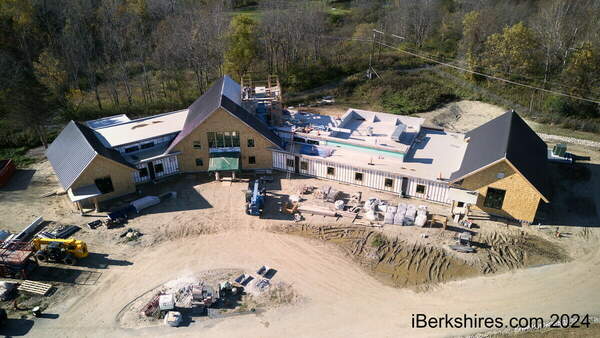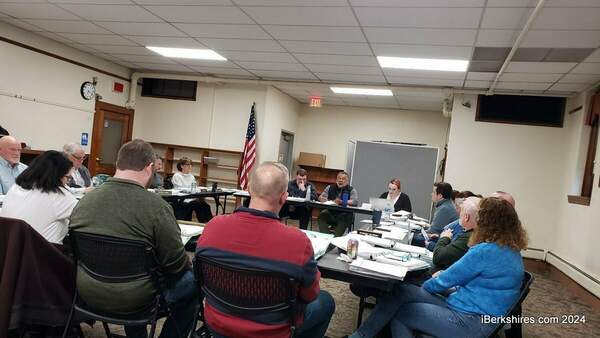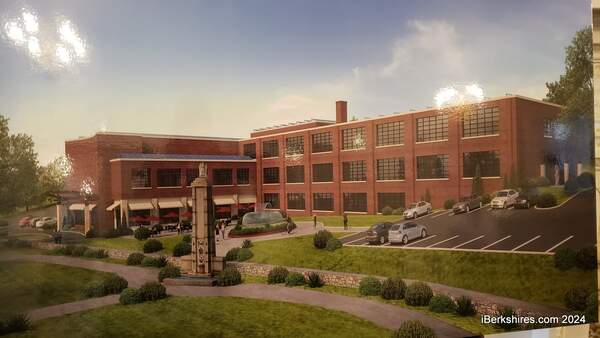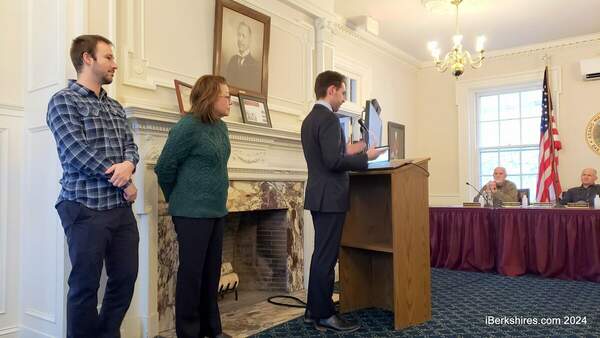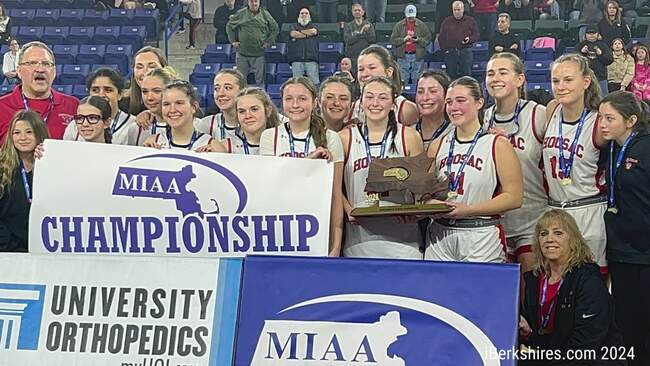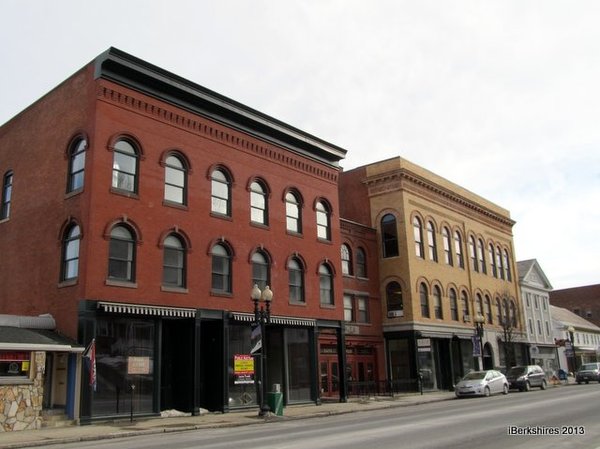
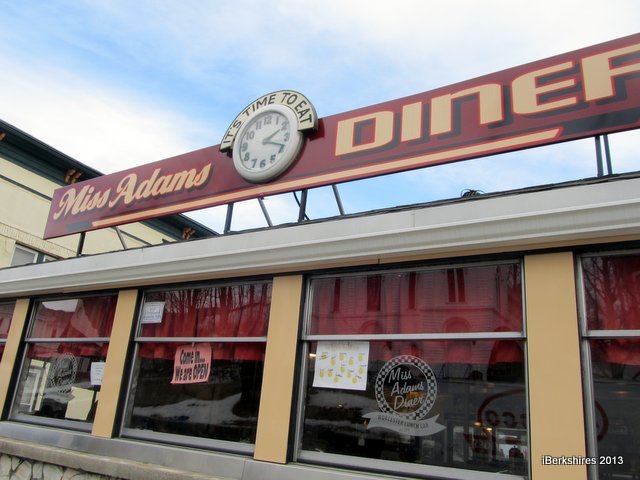
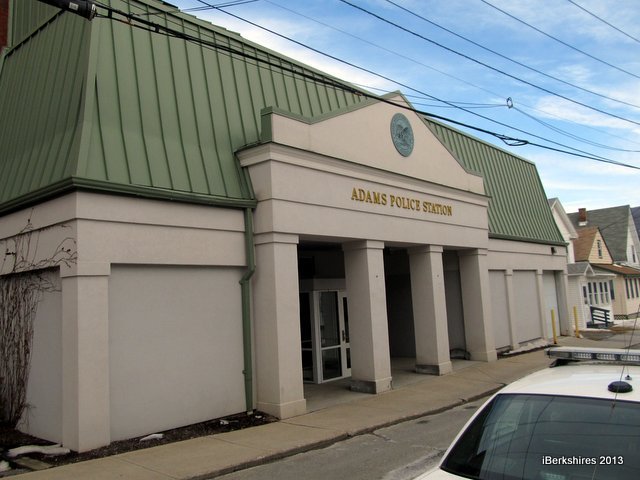

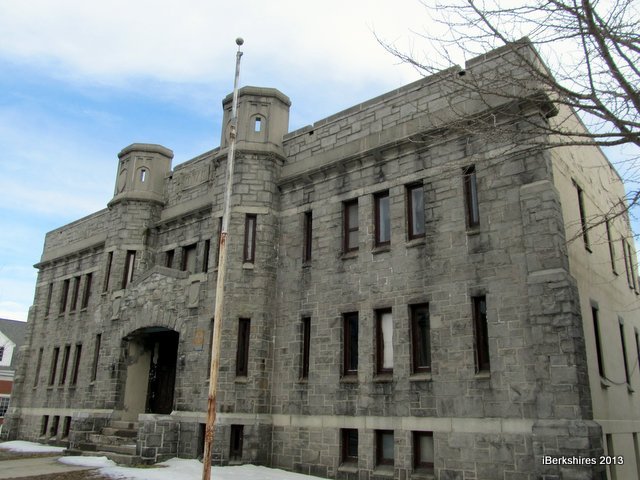
Adams Seeing Fruits of Decade of Downtown Revitalization
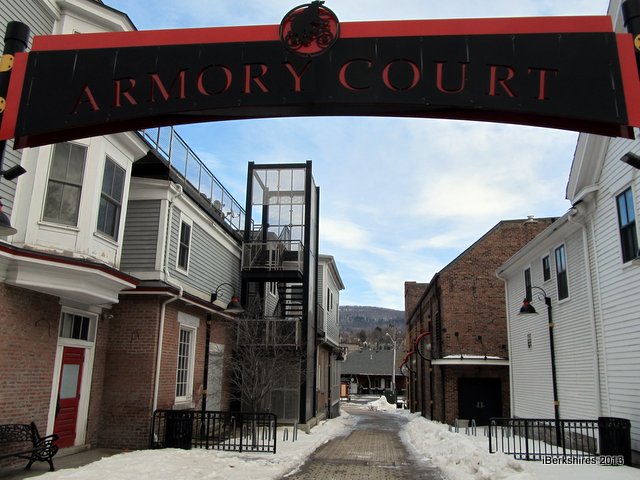 |
|
| The construction of Armory Court, once a bleak alleyway, was one of the first downtown improvements the town embarked on. Grant monies have gone to facade improvements along Park Street and sparked private development. | |
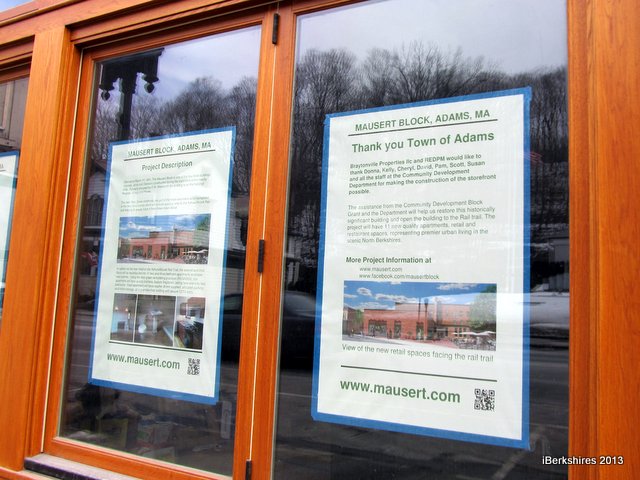 |
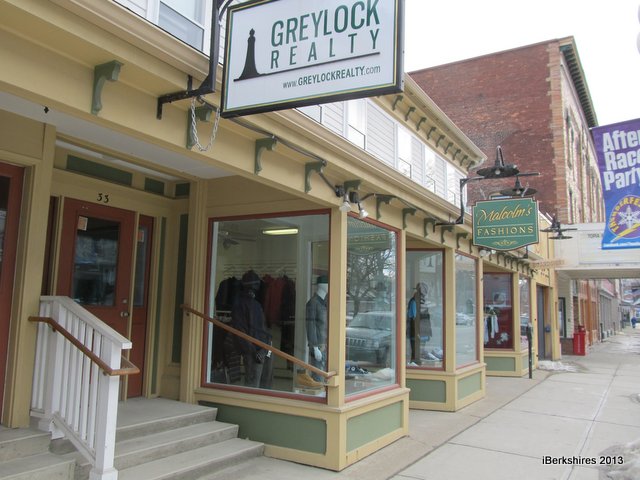 |
ADAMS, Mass. — In the last six months, five new businesses and Berkshire Scenic Railway have announced that they will call downtown Adams home.
That didn't happen by accident.
Town officials say the recent boon is the fruit of more than a decade of work aimed to transform the old mill town into an active, vibrant destination.
"This isn't just progress that's happened in the last two or three years. It's been a decade in the making," said Town Administrator Jonathan Butler. "With a community that was in the condition Adams was in in the late 1990s and 2000, it isn't just a matter of two things coming together. It takes a planning process. It takes a vision."
Butler is carrying on an effort that began years before he was even hired nearly four years ago. In an interview this past week, he and Director of Community Development Donna Cesan spoke at length about the town's initiative to rejuvenate Park Street and its environs.
The efforts began in 2000, when town planners formed the Downtown Development Committee.
Longtime shops, such as Woolworth's and Schiff's Clothing, had shuttered as the town's manufacturing base disappeared. A devastating fire in 1984 finishing off the town's textile/printing industry. Park Street became desolate and filled with blight, which was the identified as a reason why people wouldn't want to visit or live here.
"It was really looking a little shabby," Cesan said. "You needed a revitalization program to bring the downtown to life."
The committee create a plan to eliminate blight and, in 2003, the town adopted a massive documenting outlining how the town eventually wanted to look. The Selectmen then set the precedent of putting all future federal Community Development Block Grant funding toward the downtown.
"Basically, the recommendation in that plan and the projects in that plan we have been implementing one by one. The thrust of the plan was to eliminate blight conditions in the downtown and that was infrastructure and the facades and that's how the commercial facade plan developed," Cesan said. "Park Street and Summer Street construction were both projects identified in the plan."
Immediately, the town renovated Armory Court, the first of many projects, because the Ashuwillticook Rail Trail was planned and the town wanted to connect to that.
"It used to be a dirt alleyway, there was a dumpster there, there were overhead wires criss-crossing, the [former Adams] theater had plants and moss growing out of the gutters," Cesan said.
In addition upgrading the connector between the trail and Park Street into a period cobblestoned park with benches and bicycle stations, the exterior of the three surrounding buildings were improved and new stores and businesses moved into a rehabilitated building in the back.
Cesan remembers asking a for $10,000 from taxpayers to create the downtown plan and it was a "tough sell." Residents were skeptical of the effort.
"I do feel it is embraced by the community much more than before," Cesan said.
In 2004, the town began rehabilitating downtown housing units and upgrading the facades of other commercial buildings. Officials continued to reel in and use grant and town funds each year and now nearly every Park Street building has a new look.
Also in 2004, the state built the Discover the Berkshires Visitors Center, which housed the Berkshire Visitors Bureau, on Hoosac Street. The old Town Hall was renovated in 2009 and a section of Summer Street was reconstructed and buildings taken down in 2010. Parking lots, walkways and pocket parks were built over the last few years.
| Town officials are hoping the stalled Topia Arts Center will become a integral part of the downtown. |
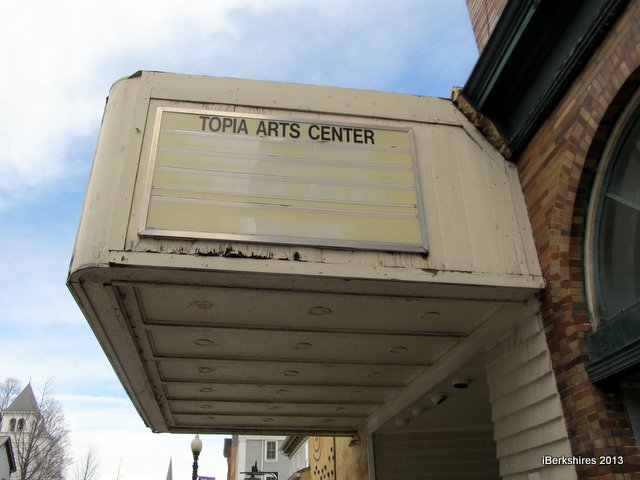 |
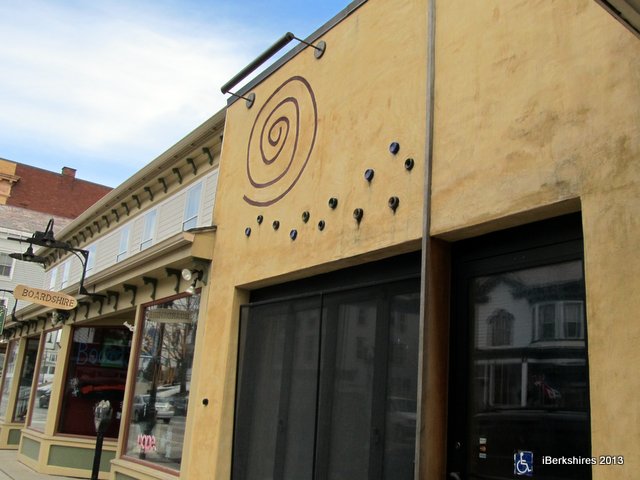 |
|
"We're in a fight for small employers. Businesses that employ 10 people, 15 people maybe 25 people, if you are lucky, and then getting a diversity of them into Adams. The only way you are going be attractive to entities like that is if you, as a community, [are] a great place to live," Butler said.
"I think in the late '90s it was difficult to do this because too large a representation in the community was still just waiting for some large employer to come back or some mill to be reoccupied. But the reality is that that day has come and gone."
The town began branding itself as the center of recreation for the county, a strength highlighted by planners early in the new century as the town was designated the developer for the Greylock Glen and the rail trail was constructed. Recreational activities have now grown to be a focus for everything the town wants to do. The hope is to create a diversity of activities to get the maximum amount of people into the downtown.
"It is our identity. It isn't just the bike trail and the Glen, those are pieces of it. It's the attitude of people in Adams. We're a recreationally minded community," Butler said. "All these things pander to activity and the more diverse things you have in your downtown, the more viable you make all those storefronts.
"I think just now, we've reached a point where some businesses are starting to realize that there is something coming together here in Adams... everything has been about getting more feet on the street in downtown Adams."
But the decade of effort hasn't come without hiccups. When the Topia Arts Center opened in the old Adams Theater in 2005 and attracted hundreds to Park Street, Cesan thought they were finally seeing the fruits of their labor. But the theater has had trouble sustaining itself and its supporters have not been able to secure the funding needed to keep it consistently open and running.
"There will be frustrating days and there will be news we get along the way that will be discouraging. But there will also be days where there are accomplishments. The key is to have more accomplishments than setbacks," Butler said.
Among the frustrations is the million dollars in state funds the town leveraged for the Jones Block only to have the developer file bankruptcy after years of delay.
"That was a long project, multiple grant sources, acquired multiple grant services that required a complicated formula to get ther," Butler said. "But we saved the building and put it in position for it to hopefully be a cornerstone for Park Street."
The Berkshire Visitors Bureau last year moved to Pittsfield, which appeared at first to fall into the setback category. But planners have moved the Council on Aging into the building, brought in the Thunderbolt Ski Museum and reopened it as the Adams Visitors Center.
"That was a blessing in disguise," Butler said. "That's going to be a big piece moving forward."
With access to power for outdoor functions, a quiet setting right next to the bike trail, parking and public restrooms, the town has found its new center. The Event Committee and the volunteer group Pro Adams have started to use the center to host events. Recently, the town was approached by a race planner who will be ending a half-marathon race on the trail there.
 |
| Adams has plans to update Park Street's look and make it more pedestrian friendly. |
"They sought us out," Butler emphasized.
In what was the biggest announcement in recent years, the Berkshire Scenic Railway is partnering with the state, the town and the city of North Adams to bring scenic train rides between the city and the visitors center — bringing thousands of people downtown on weekends.
"Instead of for every one step forward, it is two steps back, it seems like in the last year or two we are seeing that maybe for every two steps forward it is only one step back. We're starting to gain momentum," Butler said.
For instance, the long-vacant Mausert Block — directly across from Town Hall — is being renovated by a private developer for commercial and residential tenants.
But the work is far from complete. The town still has a vacant middle school and a library that need massive capital improvement, and a prominent former armory that's languishing under its current owner.
"We want to focus on the gateways to make sure those are attractive," Cesan said, adding that the town also needs to work toward making more connections with the Greylock Glen, where a primitive campground, hiking trails and conference center are planned.
The Topia Arts Center is still expected to be a massive boost and Park Street has a streetscape project planned.
"The thing about revitalization, while it may not be as concentrated, it is just like maintaining your house," said Cesan. "If you stop maintaining it, it will eventually fall apart."
Tags: CDBG, facade changes, Park Street, redevelopment,

